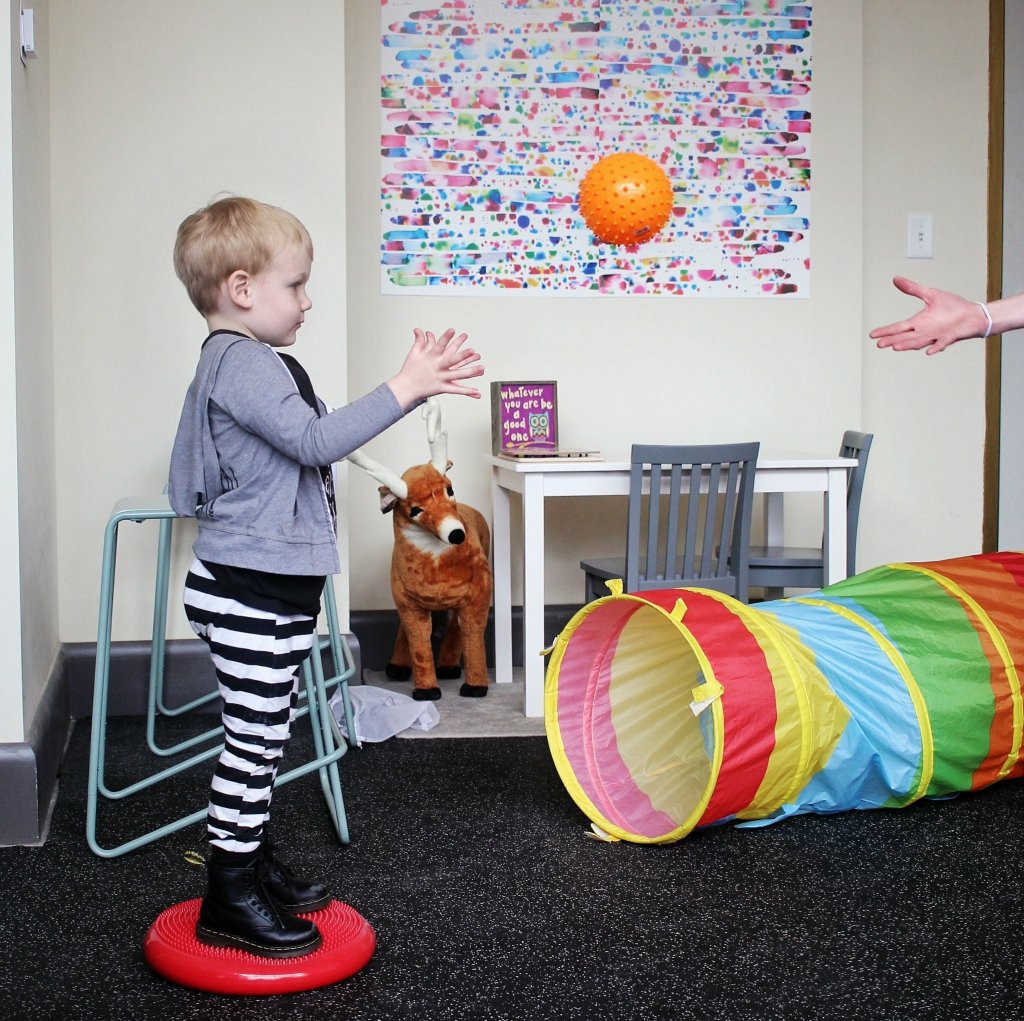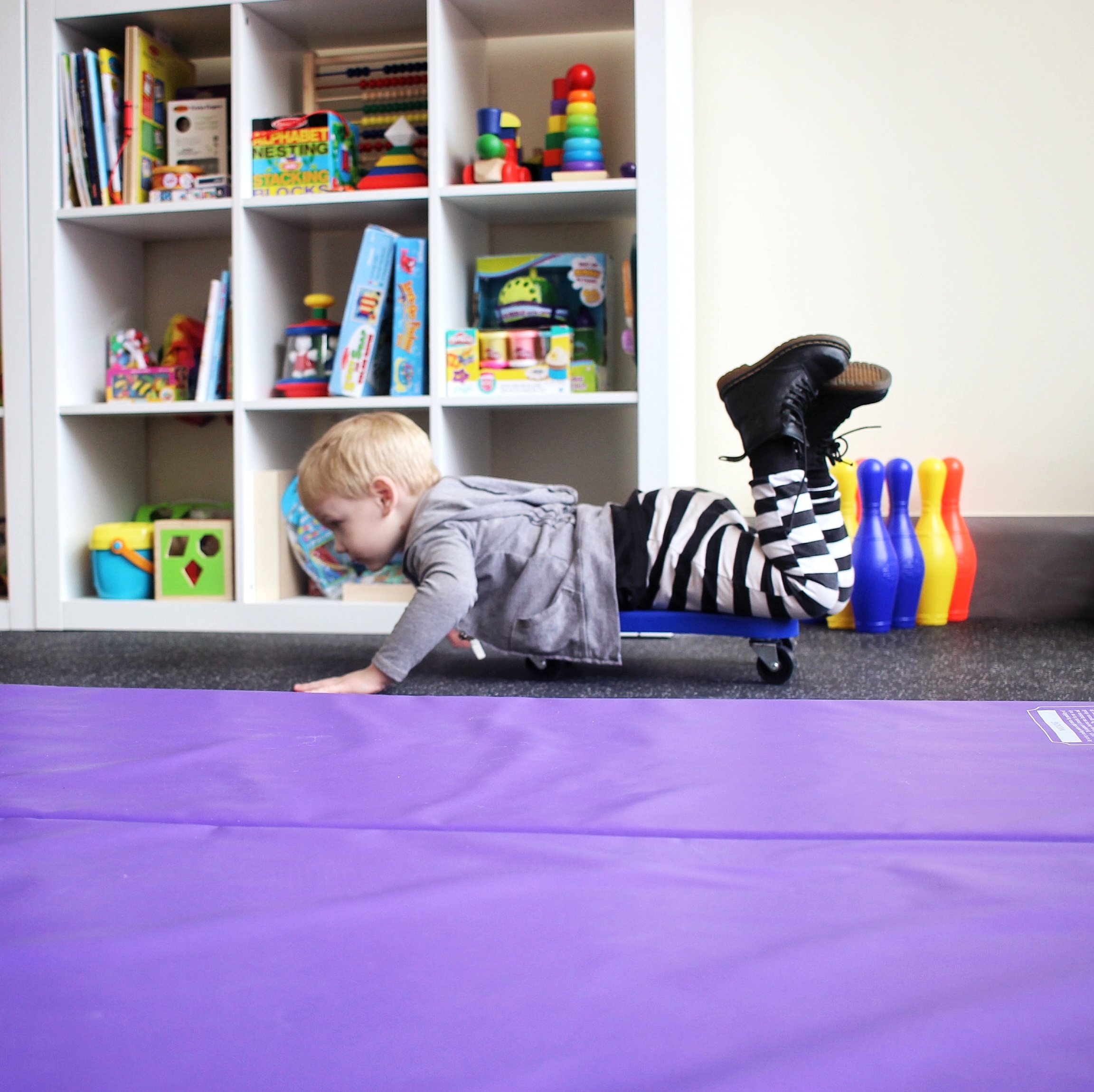One of the questions I get asked most frequently, is how we figured out Everett had Sensory Processing Disorder and how they could spot it with their child.
The conversation usually starts with a “I hope you don’t mind,” and they’ll ask some question about SPD, such as “was Everett diagnosed easily?” “Does he have food aversions?” “Does Everett have issues transitioning?” The list goes on and on.
This is actually one of the reasons I started this blog. I figured it would be a lot easier on my fingers if I could just direct them to one place that would answer their questions.
You can read a general summary of Everett’s story here. His story will give you an idea of what led to Everett being diagnosed with SPD. The goal of this blog post, is to help explain SPD in detail, talk about what goes into diagnosing SPD, and offer offer some helpful diagnostic links.
What is Sensory Processing Disorder?

Sensory Processing Disorder is a condition in which the brain has trouble receiving and responding to information that comes in through the senses.
What does this mean?
Some kids seem to have trouble handling the information their senses take in—things like sound, touch, taste, sight, and smell. Besides these common senses, there are also two other less well known ones that can be affected—proprioception, or a sense of body awareness, and vestibular sense, which involves movement, balance, and coordination. Everett’s biggest issues are with proprioception, vestibular, sound, and touch. He has a few mild issues with taste, sight, and smell, but not enough that it would classify him as having SPD. We sought a diagnosis after he had issues interacting with his peers, and the above mentioned issues were severe enough to warrant a diagnosis.
Essentially, kids with sensory processing issues experience too much or too little stimulation through these senses.
They may also have difficulty integrating sensory information—for example, when Everett hears a child crying, his first response is to hit them to “turn them off” rather than comfort them. He literally can’t process their feelings while they are making so much noise.
Everett’s Signs & Symptoms

Comparing your child to Everett for diagnosis could be spot on, or completely off. SPD exhibits in a wide variety of ways, so the list below is just an idea.
- Overly anxious with large crowds of children. Will stand off to the side instead of playing.
- Overly aggressive with peers during play. Doesn’t understand his own strength.
- Doesn’t tolerate loud noises well.
- Loves jumping, bumping and crashing activities.
- Craves fast, spinning and/or intense movement.
- Loves being tossed in the air and jumping on furniture and trampolines.
- Has an extremely high tolerance for pain.
- Has trouble understanding where their body is in relation to other objects or people.
- Has extreme food aversions.
- Wants to wear certain items nonstop (like shoes or his stripey pants).
- Delayed fine motor skills (ex handwriting techniques, catching a ball, etc).
- Has difficulty self-regualting.
- Has a weak core.
- Walks on his tip toes.
- Has difficulty with transitions and often gets “stuck” on repeat “I do it!” “I want XYZ!”
Yes, some of these are “normal” behaviors for your typical 3 year old. What stood out, was the severity of the above mentioned signs. Those in addition to his speech delay can cause a lot of issues, but he is also crazy smart and talented in other areas.
Frequent Questions
When did you notice Everett had issues?
Around the time he was a year old. He wasn’t as vocal as he should’ve been.
Does SPD overlap with a lot of things/ is he autistic?
Yes, SPD is part of many diagnosis, such as autism, adhd, Aspergers, etc, but you can have SPD without other conditions. About 1 in 20 kids have SPD. We suspect Everett might be autistic, but at this time he hasn’t been diagnosed.
How do you get a diagnosis?
Talk with your pediatrician. They can refer you to an occupational therapist who can test your child. After testing, they will send their results back to the pediatrician for a formal diagnosis.
How do you manage his SPD?
We go to an occupational therapist weekly who helps teach him (and myself) methods for coping both at home and when we are out. She works with him on strengthing his core, and helps catch him up in other areas, such as food therapy. We also do a lot of therapeutic work at home. It’s a constant and ongoing process, and no I’m not always 100% on top of my game! We have good days and bad.
Other Resources:
I used a few websites to help me navigate what SPD was and where Everett fell. Here are a couple:
Sensory Checklist: This link was super helpful in narrowing down the areas Everett needed help in.
The Star Institute: This website has numerous tips and information on everything SPD related.

